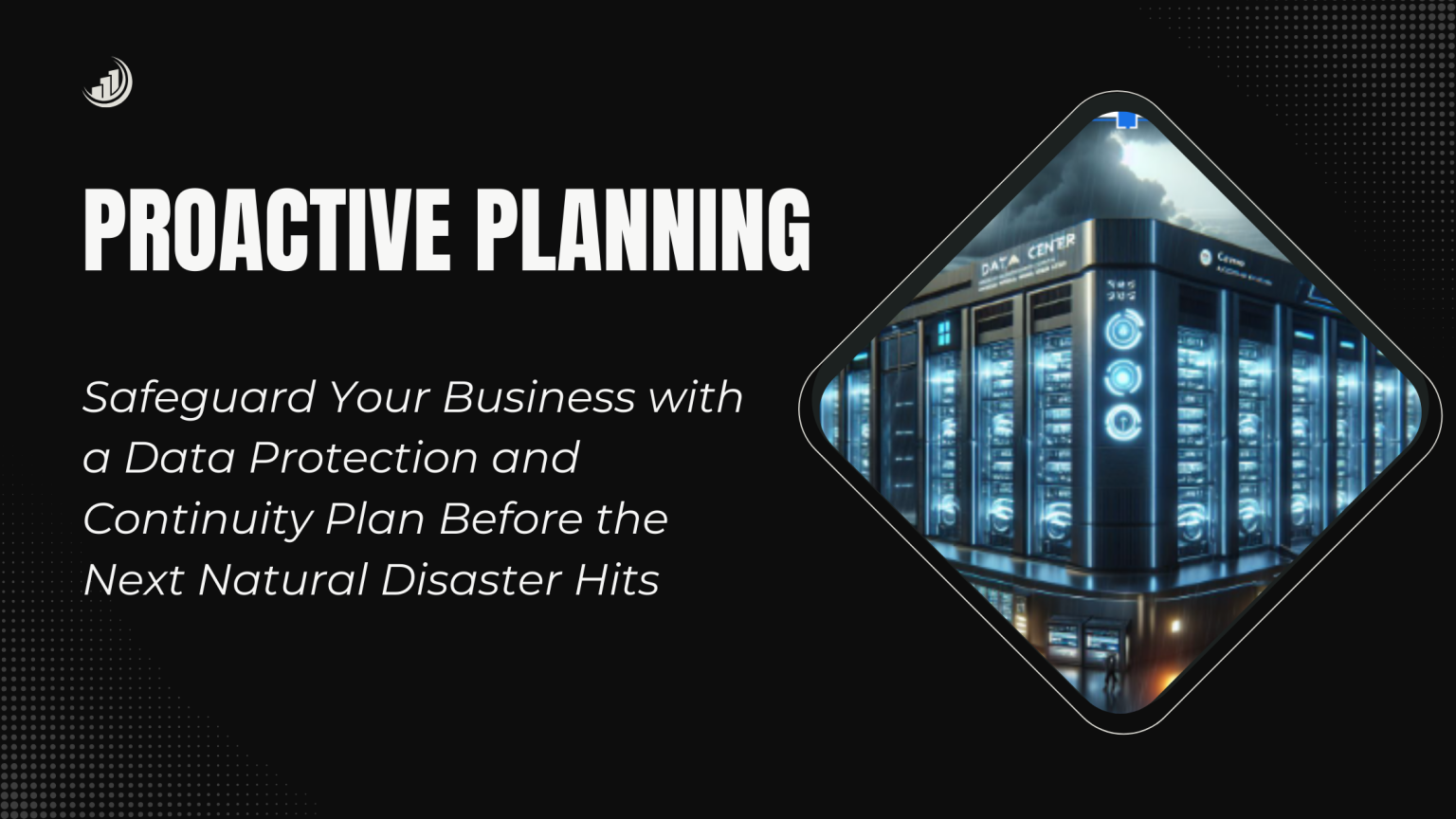
Proactive Continuity Planning: Protect Data Before Next Disaster Strikes
Natural disasters, whether hurricanes, wildfires, or floods, strike without warning and can cause immense human suffering and business disruptions. The recent devastation from Hurricane Helene and the fast-approaching Hurricane Milton have brought a tragic loss of life and catastrophic infrastructural damage. Helene, which made landfall in September 2024, led to severe flooding across Florida, leaving over 100 fatalities and thousands of homes destroyed, with storm surges up to 8 feet high. Meanwhile, Hurricane Milton, with winds exceeding 150 mph, threatens to exacerbate this damage as Florida struggles to recover. The back-to-back nature of these hurricanes highlights the critical need for businesses to implement a robust data protection and continuity plan to safeguard both operations and personnel.
It’s a Matter of Time: Why Your Business Needs a Continuity Plan Now
The severe impact of Helene and the anticipated destruction from Milton demonstrate the urgent need for businesses to plan before the next natural disaster occurs. It’s just a matter of time, but with infrastructure in many areas already compromised and power grids vulnerable to further outages, a well-prepared continuity plan can ensure business operations resume quickly, even when access to physical locations is impossible.
6 Key Steps for Developing a Disaster-Ready Business Continuity Plan
1. Assess Your Current IT Infrastructure
Evaluate your IT environment to identify vulnerabilities in storage, backup protocols, and critical systems. To protect essential data, disaster recovery protocols should include frequent backups to off-site or cloud locations.
2. Data Backup and Cloud Storage Solutions
Ensure all critical business data is backed up regularly and securely stored off-site. Cloud storage offers flexibility and security by allowing remote access to essential information, even if physical offices are damaged or inaccessible.
3. Implement Remote Monitoring and Management (RMM) Tools
RMM tools are essential for detecting and responding to system disruptions remotely. These tools allow IT teams to conduct proactive maintenance and disaster recovery, minimizing the risk of extended downtime during a natural disaster.
4. Enable Secure Remote Work for Employees
Prepare employees for remote work during a natural disaster by establishing secure communication channels and ensuring access to necessary business applications through VPNs and remote solutions that comply with cybersecurity best practices.
5. Create a Detailed Disaster Recovery Plan (DRP)
A comprehensive DRP should outline the steps required to restore business operations after a disaster, detailing which systems need prioritization and how communication will be managed internally and externally.
6. Regularly Test Your Business Continuity and Disaster Recovery Plans
Simulate disaster scenarios to test the effectiveness of your plans and refine them as needed. Regular testing ensures that employees are familiar with their roles and that your plans remain up-to-date and effective.
Special Considerations for Healthcare, Finance, and Regulated Industries
In regulated industries like healthcare and finance, compliance during a disaster is crucial. Healthcare organizations must ensure HIPAA compliance, while financial institutions must protect customer data and maintain regulatory adherence. These industries should integrate compliance considerations into their continuity plans to avoid legal repercussions post-disaster.
Post-Disaster Recovery and Lessons Learned
After the disaster has passed, review your response efforts to identify areas for improvement. Hurricane Helene and the impending Hurricane Milton have taught many businesses the value of comprehensive disaster preparedness. By learning from these events, companies can refine their continuity plans to better withstand future storms.
Final Thoughts: Being Prepared Is Being Protected
With a solid data protection and business continuity plan in place, your company can mitigate data loss, reduce downtime, and maintain operations even in the face of significant adversity. Whether you are in Florida or another disaster-prone area, preparing now for the next natural disaster—like Hurricane Milton—will ensure your business can survive and recover swiftly. Contact us today to learn more about safeguarding your business from the unpredictable forces of nature.
Take Action Now: Protect Your Business Before Disaster Strikes
Natural disasters don’t wait, and neither should you. With Systech MSP, you can safeguard your critical business data, ensure smooth operations during a crisis, and get back on your feet faster. Don’t let hurricanes, wildfires, or floods put your company’s future at risk. Let our expert team help you build a resilient data protection and business continuity plan designed for your unique needs. Contact Systech MSP today to secure your business against the unpredictable and ensure continuity when it matters most. Your business deserves protection—start planning now. Take Action before it’s too late.
